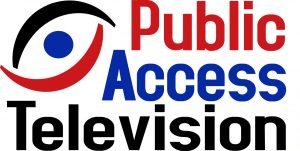
Here’s a digest of news items that crossed my desk this past week:

The FCC is about to change the playing rules for cable companies carriage of Public, Education & Government (PEG) channels on their channel offerings. These are more commonly referred to a ‘community-access’ channels. Advocates & supporters claim these offer one of the last real sources of non-filtered info or biased insight into civic, public-affairs & also educational opportunities via television. Ernesto Aguilar of the national Federation of Community Broadcasters wrote an op-ed piece in today’s RadioWorld discussing this subject. At issue is the FCC’s proposal that cable companies rules for mandatory carriage of these channels be relaxed, allowing once profitable cable operators a chance to recoup profits in the wake of major “cord-cutting” by the TV consuming public resulting in declining revenues. Ernesto Aguilar writes: “Whether it is televised city council and school board meetings, college courses or local public-affairs programming, PEG channels are a vital part of a city’s media choices. PEG channels are even more indispensable for working families, the elderly, those with limited transportation or other mobility issues, for whom PEG outlets give a window into our democratic procedures. In addition, because so many PEG channels also offer training in media and equipment, they may be the first place someone can go for an education in media that is more affordable than a big-city college. This learning as well as educational programming is doubled in a scattering of cities where PEG outlets offer both television and radio broadcasts.” Some cable companies report up to a 20% decrease in cable subscriptions this past year due to the emergence of streaming video services becoming the predominant means of accessing TV programming. Cable companies stand to gain by not providing the funding necessary to operate these channels. Aguilar goes on to state: “We live in an era where the public’s access to information is challenged as never before. Newspapers are closing. Social media is awash in misinformation and detritus. Virtually every media outlet has a spin of some kind on the news of the day. States are even changing laws to restrict access to proceedings. PEG channels are our last outpost for an unfiltered glimpse at city hall and our community. Even if there may be a valuable conversation to be had about fee structures for cable companies, yanking the rug out from cities and towns simply is not the answer. With the financial support PEG outlets get from fees, this remixing of generations’-old rules could be lethal to community access. PEG channels quietly uplift local economies, providing skills and nourishing the arts, business and many other fields. PEG channels’ funding should not only be held firm, but expanded, given their service to community media and Americans everywhere.”

The FCC released their latest station total data this past week & it’s not good news for AM radio. In spite of their so-called “AM Revitalization” efforts & the addition of FM translators to the tool-box available to AM stations, this past year saw 23 AM stations turn in their licenses. That’s almost 2 AM’s per month deleting their licenses after shutting down their operations. The total for the year now stands at 4,610 AM stations. This doesn’t take into account the numerous AM’s that have filed & been granted Special Temporary Authority (STA) to go ‘silent’ based on financial hardship. The FCC continues to demonstrate it has no interest in, nor the competence or ability to provide an effective means for AM operators to remain viable. As noted by this reporter in the past, allowing AM’s a trial one-year period of shutting off the AM transmitters & allowing them to operate their FM translators as the primary source of program signals would go a long way toward truly revitalizing this ailing medium & allow AM stations to demonstrate they can remain a viable, relevant means of informing & entertaining their communities. The FCC continues to ignore & disallow such practical proposals. This downward trend will continue & accelerate in the years to come.

North of us in the state of Alaska, the Governor has stripped all state funding from Alaska’s public radio and television stations, as part of 168 line-item vetoes to the state operating budget next year. Gov. Mike Dunleavy insists, “We believe that people will still be able to access programs through other means.” During a press conference Friday, Dunleavy explained his position on the veto of just over $2 million for public radio, and $600,000 for public television: “We believe that with the number of stations, both radio and television — and just given our fiscal situation, it’s really the fiscal situation that’s driving the need to reduce the budget — we believe that people will still be able to access programs through other means,” Dunleavy said. “We still keep intact the emergency broadcasting aspect of public media. It’s not easy, but this is going to be part of the overall reduction.” Dunleavy also vetoed the $46,000 appropriation for Alaska’s Public Broadcasting Commission. The results of these moves will be the necessary increase in fund- raising by public radio & TV stations throughout the state – a difficult endeavor during the best of times due to the limited population base within range of public broadcasters. Unlike the lower 48, many tiny communities in Alaska rely on their non-commercial stations for news, information, entertainment, personal messaging to remote listeners (aka – the “bush telegraph”) & critical weather & road forecasts & conditions. These communities cannot support commercial, private stations in all but the largest of that state’s urban centers. Disposable income among residents of a number of communities is often challenging at best, leading to uneven or unsustainable fund-raising efforts by non-commercial broadcasters. Added to the state’s reductions are federal matching fund decreases from the Corporation for Public Broadcasting. Many public stations guess their budgets will be reduced at a minimum of 18% & likely higher amounts once details of the funding decrease is in place & station budgets adjusted accordingly. As a result some broadcasters will reluctantly go off air eliminating the only radio or TV service in several communities, while others will need to make program, staffing, travel & news-gathering cost reductions or eliminations.